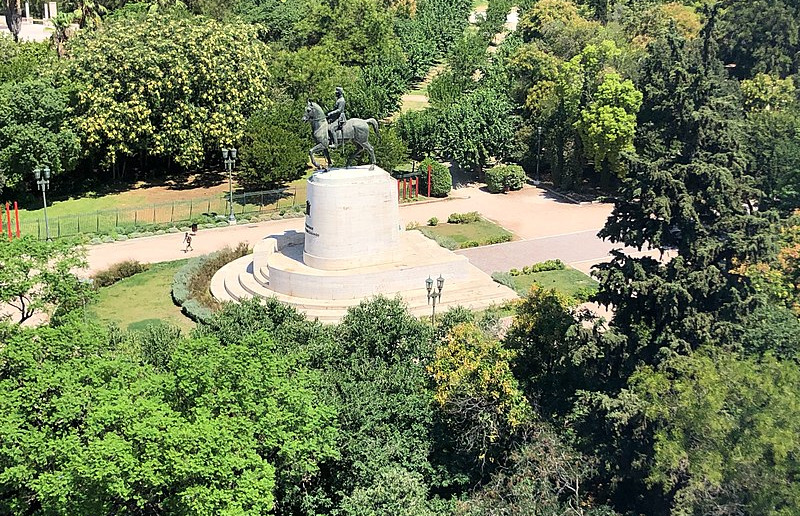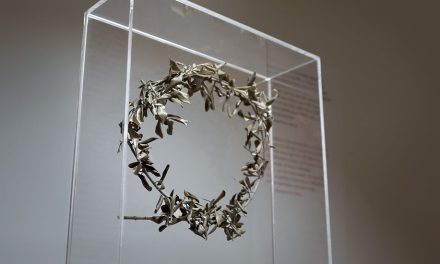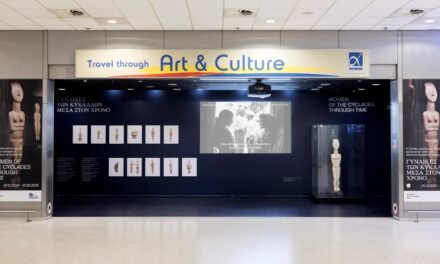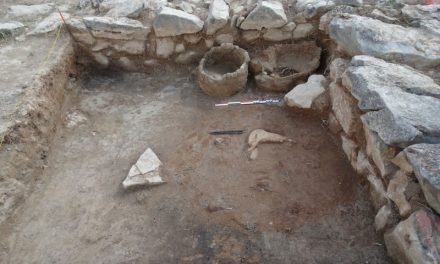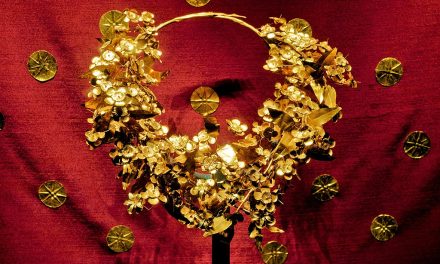Pedion tou Areos is one of the largest public parks within the municipality of Athens and one of the oldest planned recreational areas in the city. Its name means the “Field of Ares”, the ancient Greek god of war (better known by his Roman equivalent, Mars). Its name evokes the Campus Martius area in Rome, as well as the French Champ de Mars, large public greenspace in Paris.
History
The park is located in the heart of Athens, encircled by Mavromateon, Evelpidon and Pringiponisson Streets and Alexandras Avenue. It was designed in 1934 to pay tribute to the heroes of the Greek War of Independence of 1821, and is hence adorned with busts of prominent figures of the Revolution. The original plan had also included the construction of a “Pantheon” for the revolutionaries, and a large church dedicated to the Greek Independence.
The site’s remodelling and afforestation had been assigned to the newly-formed Athens Committee of Public Parks in 1927, and works began in 1933. However, due to a severe lack of funds, works progressed very slowly and had not yet reached completion by the outbreak of WWII in 1940 and the Nazi occupation of the city in 1941. Nonetheless, some 50,000 plants were put in place in that period, whilst further works took place after the end of the war.
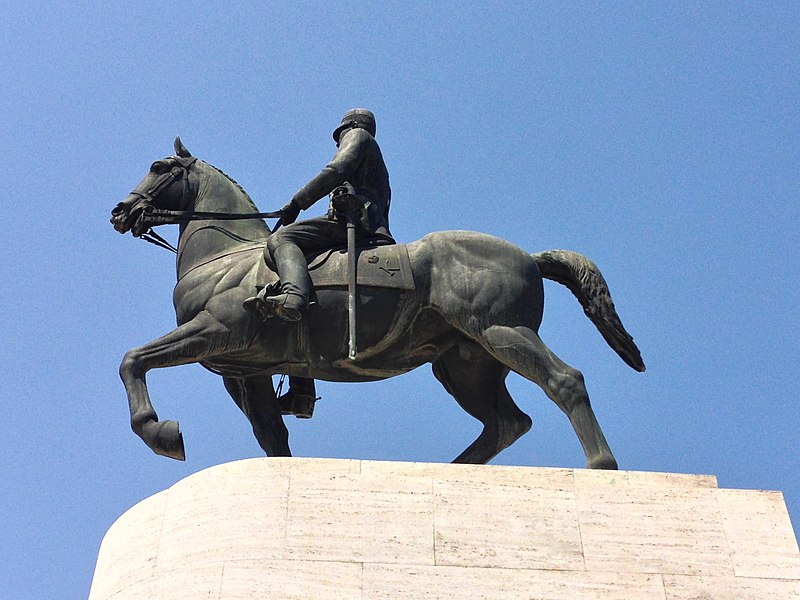 Equestrian statue of King Constantine I (by Nagaremono via Panoramio)
Equestrian statue of King Constantine I (by Nagaremono via Panoramio)
In front of the main entrance of the park stands a 6-metre tall bronze equestrian statue of King Constantine I of Greece, created by Italian sculptor Francesco Parisi and unveiled in 1938. Constantine reigned from 1913 to 1917 and from 1920 to 1922, and successfully led the Greek forces during the Balkan Wars of 1912–1913. The sculpture depicts the Monarch as commander-in-chief of the Hellenic Army.
The park encloses the Pammegiston Taxiarchon Church (Chruch of the Great Taxiarchs, i.e. archangels), a small temple dating from the 16th -17th c. Close to it stands a Memorial to the members of the Sacred Band who fell at the Battle of Dragashani. The memorial, funded by famous Greek poet Alexandros Soutsos (1803–1863) was created in 1845, and had already been relocated next to the church in 1885.
In 1952, the statue of Athena the Defender (Athena Promachos) by sculptor Vassos Falireas was placed in memory of the allied British, Australians and New Zealand soldiers who lost their lives fighting in Greece during World War II.
Works under the supervision of architect Alexandros Tompazis towards the radical renovation of the Park took place between April 2008 and December 2010. The redevelopment covered an area of 25 hectares and was financed by both EU and national funds.
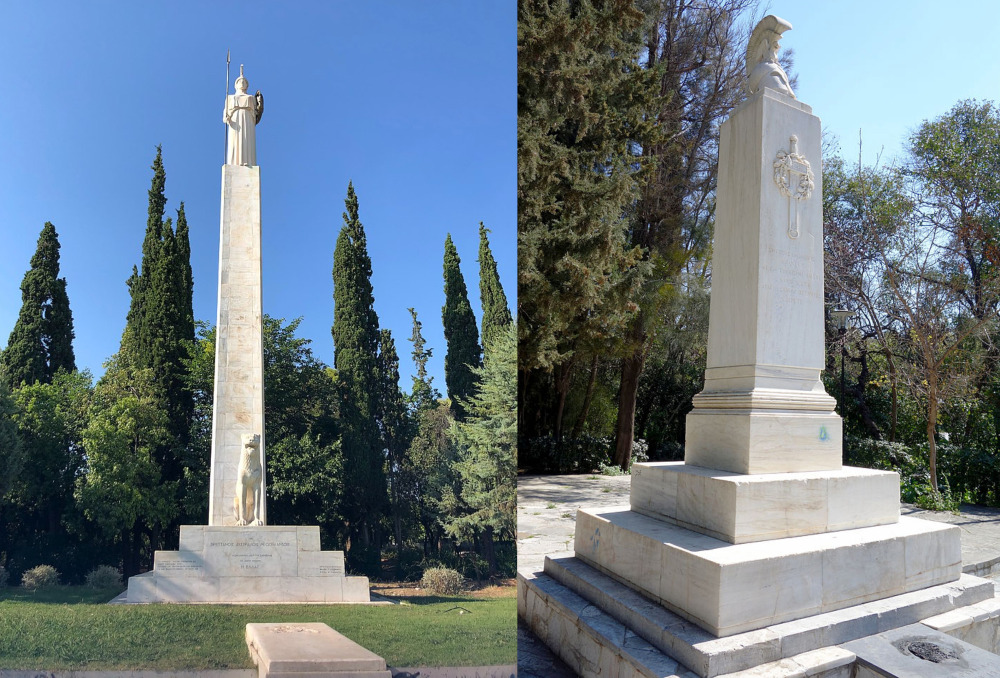 Left: Athena the Defender (by Sp!ros via Wikimedia Commons); Right: Sacred Band Memorial (by 2gymkais1 via Wikimedia Commons)
Left: Athena the Defender (by Sp!ros via Wikimedia Commons); Right: Sacred Band Memorial (by 2gymkais1 via Wikimedia Commons)
Sculptures of heroes of the Greek War of Independence
Alexandros Ypsilantis’ Memorial, the burial monument of Greek military commander and national hero Alexander Ypsilantis, is one of the sculptural masterpieces that we can see in the Pedion tou Areos. Ypsilantis led the Filiki Eteria (“Society of Friends”), the secret organisation that coordinated the launching of the Greek War of Independence against the Ottoman Empire, and the Hieros Lochos (“Sacred Band”), the War’s first organised military unit.
The sculpture was made in 1869 and although it bears no artist’s signature, it is attributed to sculptor Leonidas Drossis. Ypsilantis’ remains lie in the sarcophagus which bears embossed decorations on its sides (laurel wreaths, the Phoenix, the sign of the Revolution and a sword). The original location of the monument was at the Athens Polytechnic School and in 1964 it was transferred in front of the church of Agioi Taxiarches in the Pedion tou Areos.
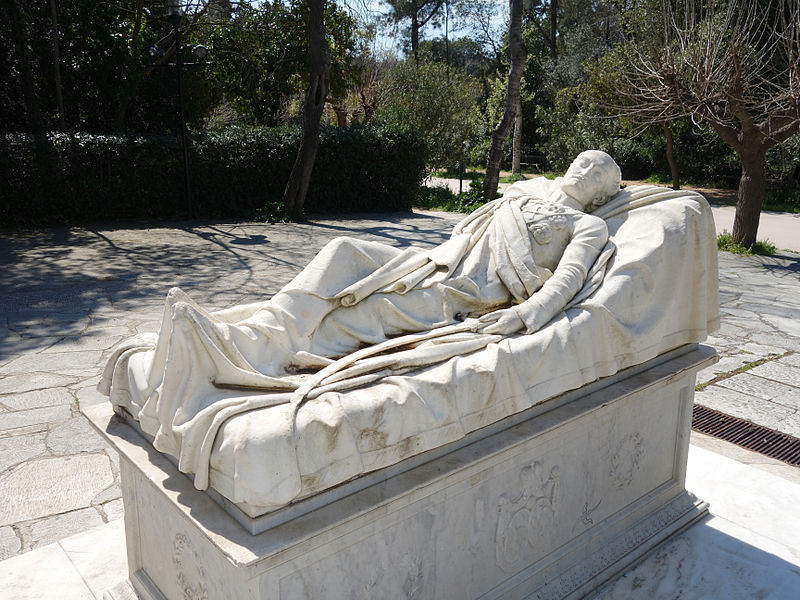 Memorial of Alexander Ypsilantis (by 2gymkais2 via Wikimedia Commons)
Memorial of Alexander Ypsilantis (by 2gymkais2 via Wikimedia Commons)
The national memorial site in the park known as “Avenue of Heroes” is lined with 21 marble busts of heroes of the Greek War of Independence, most of them created between 1934 and 1937 by 16 prominent Greek artists. Among these are the sculptures of the following leading figures and heroes of the Greek war Independence:
Revolutionary hero Nikitaras (nom de guerre of Nikitas Stamatelopoulos) is depicted at a mature age, with a thick mustache and vest. An impressive abundance of descriptive elements is observed not only in the rich embroidery of his costume but also on his face. The name of the sculptor, Grigorios Zevgolis, is imprinted on the left side of the bust while the hero’s name and dates of birth and death are written on the pedestal front. Zevgolis (1886-1950), originally from Naxos, studied painting under Nikephoros Lytras and sculpture under Georgios Vroutos at the Athens School of Fine Arts.
The bust of Grigorios Dikaios, known as Papaflessas, standing on 2-metre tall base that bears his name and the dates of birth and death, also stands at the Avenue of Heroes. It is believed that his raised eyebrows evoke his history as a fighter, while his modes gaze symbolizes his priestly office. The sculpture, unveiled on 25 March 1937, was created by Kostis (Costi) Papachristopoulos, who was born in Athens in 1906. He studied sculpture at the School of Fine Arts, and continued at the Academie Julian in Paris. In 1945 he settled permanently in Paris, until his death in 2004.
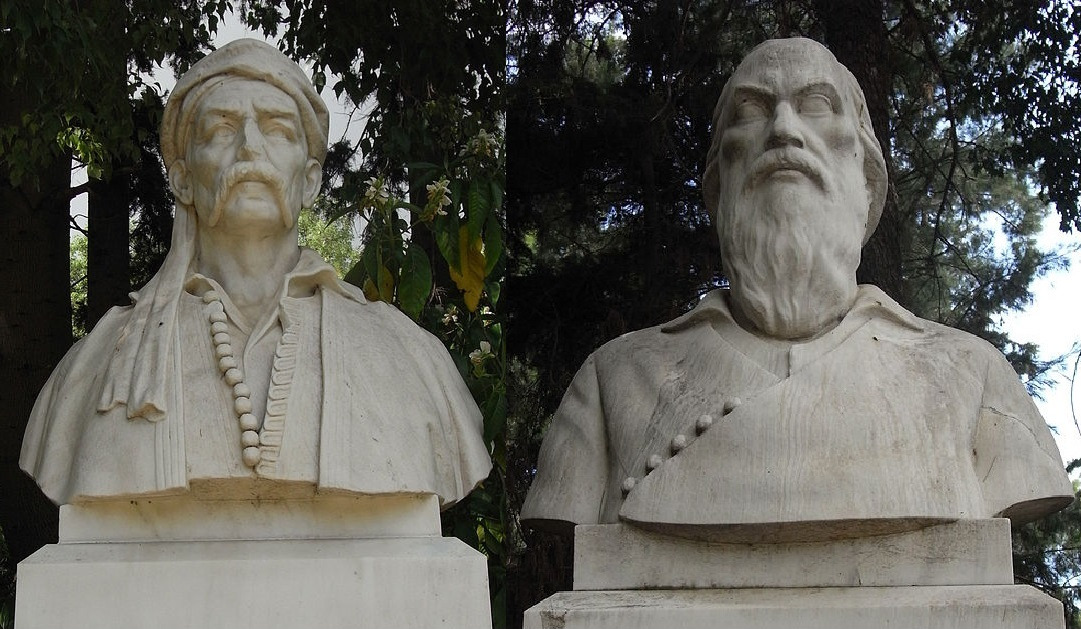 Left: Bust of Nikitaras (by antomoro via Wikimedia Commons); Right: Bust of Papaflessas (by antomoro via Wikimedia Commons)
Left: Bust of Nikitaras (by antomoro via Wikimedia Commons); Right: Bust of Papaflessas (by antomoro via Wikimedia Commons)
The bust of Georgios Karaiskakis (1780-1827) bears sculptor Fokion Rok’s signature on the left, while the front of the pedestal is inscribed with the hero’s name and dates of birth and death. The artist combines realism with an emphasis on simplicity. The hero’s head is slightly turned to the left giving an impression of movement. Greek sculptor and writer Fokion Rok (1891-1945) was the son of John Rock (1859 – 1909), an officer of the Greek Army. He fought in the Balkan Wars; he graduated from the Athens School of Fine Arts and continued his studies at the Ecole Superiere des Beaux Arts and the Academie de la Grande Chaumiere in Paris. The unveiling of the bust also took place in March 25, 1937.
Sculptor Petros Roumpos created the marble bust of Athanasios Diakos. The hero is depicted in war vestment with a mustache and long hair; the artist has rendered the fighter’s renowned beauty. Petros Roumpos (1873 – 1942) was a prominent Greek sculptor, painter and illustrator; he created mainly portraits and busts, as well as burial monuments. He was born in Sparta, and studied painting and sculpture at the Athens School of Fine Arts. One of the most famous works of the artist is the marble bust of the poet Lorentzos Mavilis which stands at the eponymous Square of Athens.
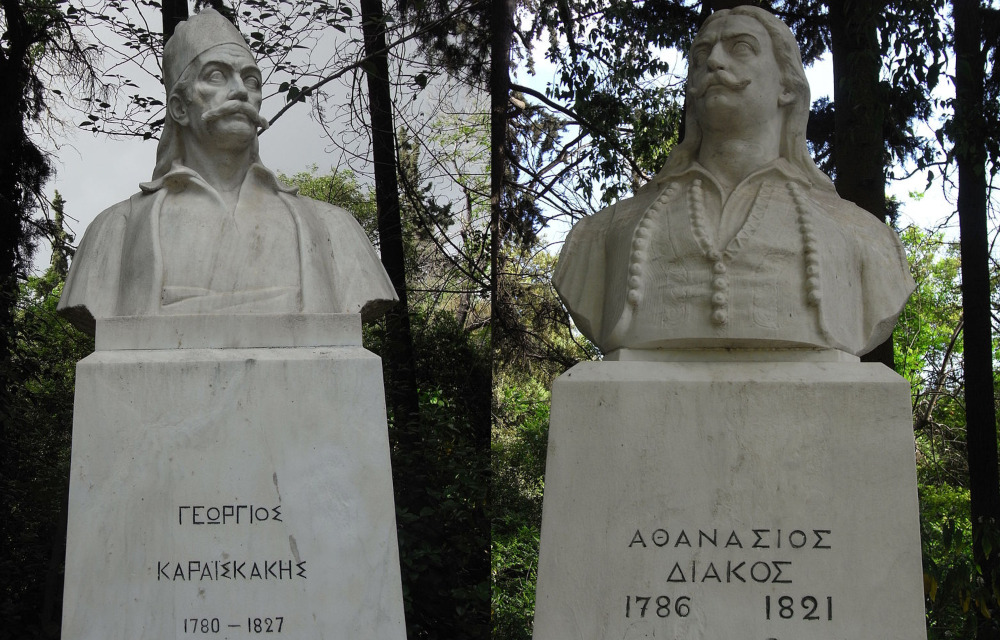 Left: Bust of Georgios Karaiskakis (by antomoro via Wikimedia Commons); Right: Bust of Athanasios Diakos (by antomoro via Wikimedia Commons)
Left: Bust of Georgios Karaiskakis (by antomoro via Wikimedia Commons); Right: Bust of Athanasios Diakos (by antomoro via Wikimedia Commons)
The bust of Odysseas Androutsos portrays the hero with a mustache and long hair. It is the work of sculptor Thanassis Apartis (Athanase Apartis, 1899-1972). Born in Smyrna and raised in Athens, Apartis studied at the Ecole Supérieure des Beaux Arts, the Academie Julian and the Grande Chaumiere, in Paris. He lived in Paris for a large part of his life, while he was made professor at the Athens School of Fine Arts in 1961. In 1967, he was elected an associate member of the sculpture department at the French Academie des Beaux Arts. In 1939, he was awarded the Legion d`Honneur of the French Republic and in 1947 the Palmes Academiques by the French Ministry of Education.
Read also via Greek News Agenda: “Greece 2021” | The celebrations for the 200th anniversary of the country’s Independence War; Alexander Ypsilantis, a leader of the Greek Revolution; The visual representation of the 1821 Greek War of Independence through the eyes of Greek and foreign artists; Arts in Greece | Dimitrios Filippotis, between Neoclassicism and Realism; Arts in Greece | The First Cemetery of Athens, an open-air “museum”
M.V. (Intro image: View of the park’s main entrance, by Sp!ros via Wikimedia Commons)

